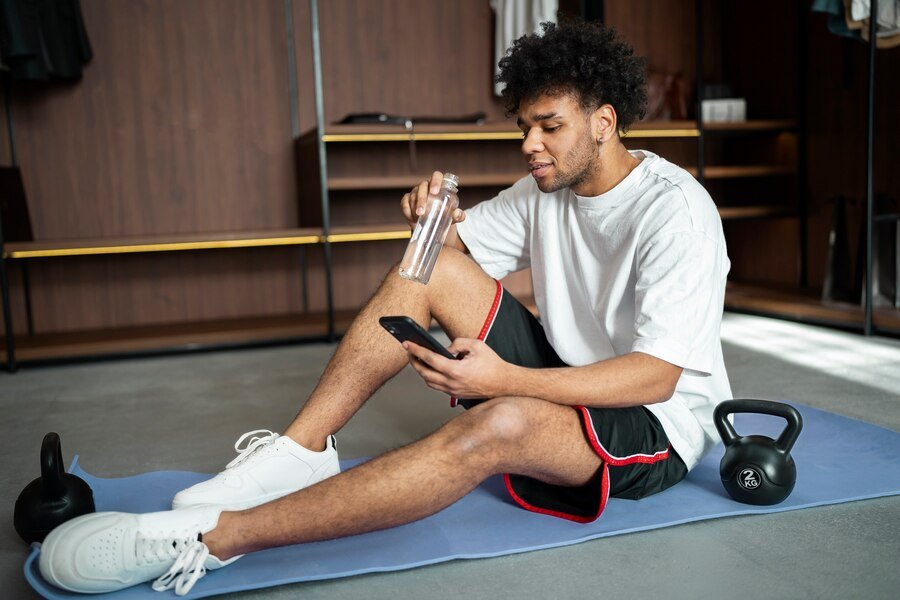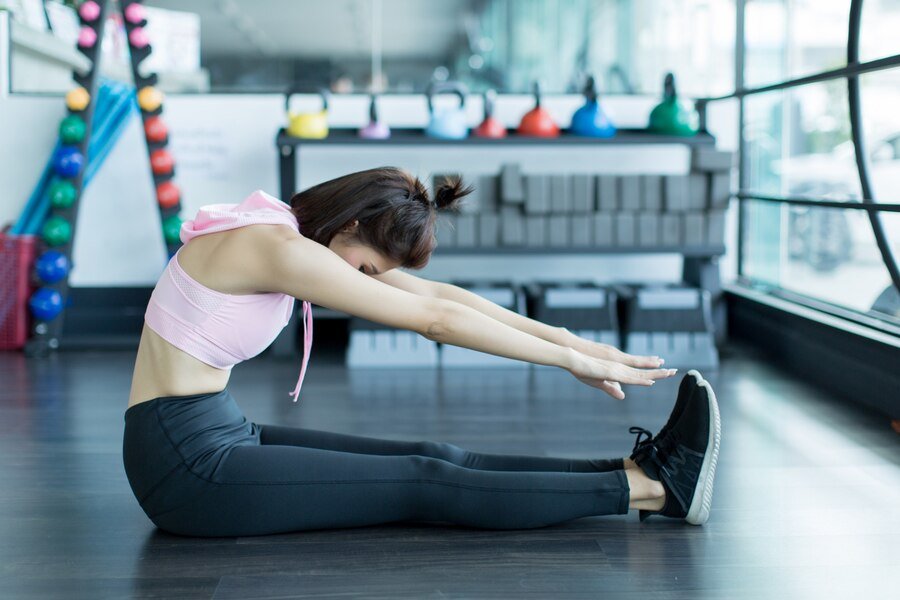Sports injuries, including acute injuries and chronic injuries, are an unfortunate reality for athletes of all levels, from weekend warriors to seasoned professionals.
Understanding the common types of sports injuries, their risk factors, and the importance of rehabilitation exercises can make a significant difference in recovery.
This article explores prevalent sports injuries, essential rehabilitation techniques tailored for each type, and guidance on when to seek professional help from a sports physician or physical therapists.
Whether you’re looking to bounce back quickly or prevent future injuries, such as through targeted exercises and injury prevention strategies, there are valuable insights to share.
Key Takeaways:
Rehabilitation exercises are crucial for recovering from common sports injuries and preventing future ones, enhancing overall muscle strength.Balance and stability exercises for ankle sprains, strengthening exercises for knee injuries, and rotator cuff exercises for shoulder injuries are some of the best rehabilitation techniques to aid in injury recovery.It’s important to seek professional help from athletic trainers or sports physiotherapy specialists when rehabilitation exercises are not enough or when signs of inadequate recovery are present. Frequency of rehab exercises should align with recommended guidelines and recovery plans.
What Are Common Sports Injuries?
Common sports injuries encompass a wide range of conditions that affect athletes across various sports, often leading to significant disruptions in their training and performance. The most prevalent types include sprains, strains, fractures, and tendonitis, which can occur as acute injuries or develop gradually as chronic injuries within the musculoskeletal system. Understanding the nature of these injuries is crucial for injury prevention and effective recovery strategies.
What Are The Most Common Sports Injuries?
The most common sports injuries include ankle sprains, knee injuries, shoulder injuries, hamstring strains, tennis elbow, plantar fasciitis, and concussions, each presenting unique challenges for rehabilitation. These injuries often result from repetitive strain, improper technique, or a sudden impact, making them prevalent in sports such as football, basketball, and soccer, requiring effective injury management.
Injuries like ankle sprains, for instance, frequently occur during sports activities involving quick directional changes, causing pain and instability in the ankle joint.
- Causative Factors: Poor footwear, uneven surfaces, or a lack of proper warm-up.
- Symptoms: Swelling, bruising, and difficulty in weight-bearing activities, indicating the need for prompt injury assessment and management.
- Rehabilitation: Includes rest, ice application, compression, pain management techniques, and gradual strength training for injury recovery.
Meanwhile, knee injuries can stem from sudden pivots or falls, resulting in ligament damage, notably the anterior cruciate ligament (ACL), necessitating a structured rehabilitation program.
- Causative Factors: Overexertion, fatigue, and lack of conditioning.
- Symptoms: Instability, swelling, and a popping sensation at the time of injury.
- Rehabilitation: Focuses on strength exercises and flexibility training.
Understanding these factors can significantly aid athletes in preventing and managing injuries effectively.
What Are The Risk Factors For Sports Injuries?
Risk factors for sports injuries can be categorized into intrinsic and extrinsic factors, significantly influencing an athlete’s likelihood of experiencing musculoskeletal injuries. Factors such as age, gender, physical conditioning, previous injuries, and the type of sport can all contribute to the risk of injury, highlighting the importance of tailored injury prevention strategies.
The intrinsic factors include an individual’s physical attributes and psychological state, while extrinsic factors encompass environmental influences and equipment quality. This complex interplay undeniably raises the stakes in sports, underscoring the need for thorough injury assessment, intervention strategies, and functional rehabilitation to prevent injuries.
- Intrinsic Factors:
- Age: Older athletes may have diminished recovery capability.
- Physical Conditioning: An athlete’s fitness level plays a crucial role in susceptibility.
- Previous Injuries: A history of injuries often increases the risk of re-injury.
- Extrinsic Factors:
- Environmental Conditions: Wet or uneven surfaces can lead to falls.
- Equipment: Proper footwear and gear can mitigate injury risk.
- Coaching Practices: The intensity of training regimens may contribute to fatigue and injuries.
By recognizing these elements, athletes can implement targeted prevention strategies and exercise programs that align with their specific risks and enhance their athletic performance longevity.
Why Are Rehab Exercises Important For Sports Injuries?
Rehabilitation exercises play a pivotal role in the recovery from sports injuries, facilitating the healing process and improving overall athletic performance through functional rehabilitation. Tailored rehabilitation programs, guided by physical therapists or sports physiotherapy specialists, aim to restore muscle strength, flexibility, and coordination to help athletes regain their pre-injury capabilities through effective exercise therapy. Effective rehab exercises also enhance injury resilience and contribute to optimal recovery outcomes, ensuring long-term athletic success.
How Do Rehab Exercises Help In Recovery?
Rehabilitation exercises aid in injury recovery by targeting specific areas of the body to improve muscle strength, flexibility, and overall function through carefully crafted mobility exercises. These exercises are designed to alleviate pain, enhance mobility, and restore joint range, allowing athletes to return to their sports safely and effectively.
To effectively promote recovery, it’s essential to follow a structured rehabilitation plan. This plan typically incorporates various methods such as pain management techniques, coordination training, and mobility exercises. These methods work synergistically to:
- Reduce inflammation and pain levels through targeted rehabilitation techniques.
- Increase strength in the affected area through structured strength training.
- Enhance flexibility to prevent future injuries through consistent flexibility training.
By adhering to this systematic approach, individuals can progress through their rehabilitation journey with confidence, ultimately restoring their functionality and improving their quality of life. Emphasizing the importance of consistency in these rehabilitation exercises will significantly contribute to successful recovery and performance outcomes.
What Are The Best Rehab Exercises For Common Sports Injuries?
The best rehabilitation exercises for common sports injuries focus on restoring functionality, strength, and mobility tailored to specific injuries like those sustained in elite performance settings. By incorporating targeted exercises into a comprehensive rehabilitation program, athletes can effectively address their unique challenges and enhance recovery outcomes.
Ankle Sprain: Balance and Stability Exercises

For an ankle sprain, balance and stability exercises, part of exercise therapy, are essential for restoring proper joint function and preventing future injuries. These exercises focus on proprioception training, helping athletes regain confidence in their movements while enhancing coordination and muscle control.
Engaging in targeted exercises can significantly bolster recovery by improving the body’s awareness of its position and movement through proprioception training. Various activities not only aid in rehabilitation but also contribute to overall performance enhancement. Some effective routines include:
- Single-leg stands: Practicing standing on one leg for extended periods helps develop balance and increases proprioceptive feedback, crucial for injury resilience.
- Balance boards: Using a balance board can challenge stability and strengthen the small stabilizing muscles around the ankle.
- Heel-to-toe walks: Walking in a straight line while placing one foot directly in front of the other can further improve coordination and flexibility.
Incorporating these exercises can lead to improved strength and a lower risk of reinjury, ensuring a more secure return to activity and enhancing athletic performance.
Knee Injuries: Strengthening Exercises

Strengthening exercises are crucial for knee injuries, as they build muscle strength around the joint, promoting stability and reducing the risk of re-injury. Implementing a structured rehabilitation program focused on targeted exercises can significantly aid in the injury recovery process for sports injuries.
When individuals engage in a regimen tailored specifically for their knee health, they often experience improved functionality and a faster return to their daily activities. Here are some effective exercises that can be incorporated into your rehabilitation program:
- Quadriceps strengthening: Exercises like squats and leg presses help reinforce the muscles at the front of the thigh, offering essential support to the knee.
- Hamstring curls: Strengthening the back of the thigh improves balance and aids in reducing stress on the knee joint.
- Balance exercises: Simple activities such as standing on one leg or using a balance board enhance stability, which is vital for proper joint function.
Consistency in these targeted movements nurtures not only muscle growth but also promotes long-term joint resilience and overall athletic health.
Shoulder Injuries: Rotator Cuff Exercises
Rotator cuff exercises are vital for shoulder injuries, targeting the muscles and tendons that stabilize the shoulder joint, essential for effective injury management. These exercises enhance flexibility, support pain management, and facilitate a smoother recovery process for athletes.
Incorporating these targeted movements is essential not only for athletes but for anyone recovering from shoulder injuries, helping to enhance their rehabilitation goals. A well-rounded program emphasizes building strength while prioritizing proper form to prevent further damage.
- Exercises such as external rotations, pendulum swings, and scapular squeezes can effectively rehabilitate the shoulder.
- Dynamic stretches can further promote blood flow, aiding in recovery and enhancing overall shoulder functionality.
Consistent practice of these exercises can lead to improved range of motion and reduced discomfort, ultimately allowing individuals to return to their regular activities with confidence. Adopting a comprehensive approach can significantly impact the rehabilitation journey, ensuring long-lasting results in the context of sports injury management.
Hamstring Strain: Stretching and Strengthening Exercises

For a hamstring strain, a combination of stretching and strengthening exercises is crucial for facilitating recovery and preventing future injuries. These exercises help improve flexibility while strengthening the hamstring muscles, ensuring athletes can return to full athletic performance and participate in sports-specific activities.
Incorporating a structured routine not only aids in recovery but also builds a resilience that is vital for any active individual.
Engaging in hamstring-centric exercises regularly can effectively enhance overall muscle function, preventing strains and tears in the future. Athletes should consider the following training interventions:
- Static Stretching: This involves gently elongating the muscle fibers to improve flexibility.
- Dynamic Stretching: Movement-based stretches can warm up the muscles, preparing them for activity.
- Strengthening Exercises: Resistance training, like leg curls, can build strength without overstraining the muscles.
Maintaining a balanced routine that combines these elements not only supports healing but also ensures that the hamstring remains strong and resilient against future strains.
Tennis Elbow: Wrist Extensor Strengthening Exercises
Wrist extensor strengthening exercises are key for treating tennis elbow, focusing on the muscles that support the elbow joint and forearm. These rehabilitation strategies alleviate pain and improve functionality, allowing athletes to participate in sports-specific activities safely.
Integrating these exercises into a recovery plan can make a significant difference in how one manages the discomfort associated with this common overuse injury. By enhancing strength in the forearm muscles, individuals often find that they can perform daily tasks with greater ease, paving the way for effective athlete recovery.
- Wrist curls help to build endurance, which is essential for prolonged racquet activities.
- Reverse wrist curls focus on the muscle groups critical for stabilizing the elbow during play.
- Stretching routines prevent stiffness, ensuring flexibility in the forearm.
Ultimately, the goal is to promote healing through targeted reinforcement, allowing athletes to return to their favorite sport without fear of re-injury, ideally under the guidance of a rehabilitation specialist.
Plantar Fasciitis: Foot and Ankle Strengthening Exercises
Foot and ankle strengthening exercises are essential for managing plantar fasciitis, addressing the underlying muscle imbalances that contribute to the condition. These rehabilitation techniques promote better mobility and overall foot health, aiding in the recovery process.
Incorporating a routine of targeted exercises not only helps alleviate the discomfort associated with this common ailment but also fortifies the muscles supporting the arch and heel. By regularly practicing these methods, the individual can gradually regain strength, flexibility, and stability, which are crucial for preventing future flare-ups.
Some beneficial exercises include:
- Toe Taps: Gently tapping the toes can enhance flexibility.
- Heel Raises: Elevating the heel while standing strengthens calf muscles.
- Foot Domes: Creating an arch with the foot aids in improving overall function.
It’s important for those dealing with plantar fasciitis to remain consistent with their exercise regimen. Tailored programs guided by healthcare professionals, such as those provided at a sports injury center, can significantly contribute to an effective recovery journey.
Concussion: Light Aerobic Exercises
For athletes recovering from a concussion, light aerobic exercises are crucial for promoting blood flow and aiding the healing process. These gentle activities can help improve recovery outcomes while managing symptoms effectively.
Engaging in light aerobic exercises serves multiple purposes in the context of injury management and rehabilitation. By gradually reintroducing physical activity, individuals can stimulate circulation, which is essential for delivering nutrients to the injured brain, particularly for athletes recovering from significant injuries.
These low-impact exercises can help decrease anxiety and improve mood, factors that are vital during the often long and challenging recovery period. Incorporating activities like walking, cycling, or swimming not only supports physical well-being but also fosters a sense of normalcy and routine.
- Promotes blood circulation
- Reduces anxiety
- Enhances mood
- Fosters routine
Therefore, prioritizing a tailored approach to light aerobic exercise is fundamental to the holistic recovery process for concussed athletes.
How Often Should Rehab Exercises Be Performed?
The frequency of rehabilitation exercises is vital for ensuring effective recovery and achieving rehabilitation goals, especially in the context of sports injury management. A well-structured rehabilitation program typically recommends performing exercises several times a week, tailored to the individual’s specific needs and injury type.
What Is The Recommended Frequency For Rehab Exercises?
The recommended frequency for performing rehab exercises can vary greatly depending on the severity of the injury, the type of rehabilitation program, and the individual’s overall health. Typically, athletes may need to engage in rehab exercises three to five times per week for optimal recovery.
Understanding the nuances of rehabilitation exercises, particularly as they relate to sports injury, is crucial for ensuring a successful recovery. Factors influencing frequency include:
- Severity of Injury: More serious injuries often necessitate increased focus on rehabilitation, sometimes requiring multiple sessions per day.
- Personal Goals: Individuals aiming for a quick return to sports may adhere to a more rigorous schedule.
- Feedback from Professionals: Regular assessments from therapists can determine adjustments to the exercise regime as progress is made.
- Overall Health: Existing health conditions can affect energy levels and the body’s resilience, influencing how often rehab sessions can realistically take place.
By tailoring the frequency of exercises based on these criteria and considering factors like muscle tightness, individuals can enhance their healing process, ultimately leading to a more successful recovery.
When Should Someone Seek Professional Help For Sports Injuries?
Seeking professional help for sports injuries is crucial when symptoms persist or worsen despite following a rehabilitation program. An injury assessment by a sports physician or physical therapist can identify underlying issues, ensuring that the appropriate rehabilitation strategies are implemented for effective recovery.
What Are The Signs That Rehabilitation Exercises Are Not Enough?
Signs that rehabilitation exercises may not be enough include persistent pain, swelling, or limited mobility that does not improve with consistent practice, indicating the need for a thorough athlete assessment. When these symptoms arise, it may be time to consult a healthcare professional for a thorough evaluation and tailored treatment plan.
Identifying the appropriate time to seek professional help, such as from a sports injury center or a specialist in orthopedic surgery, can significantly impact the recovery journey. Recognizing these critical signs often means understanding not just the physical discomfort, but also the emotional and functional aspects of an injury. Here are some common indicators that it may be time to consult with professionals like Paul Tanner or Phil Pask:
- Worsening Symptoms: If discomfort intensifies despite ongoing rehabilitation efforts, it could signal a deeper issue.
- Prolonged Inflammation: Persistent swelling may suggest inadequate healing, requiring intervention.
- Mobility Restrictions: Difficulty in performing daily activities or achieving prior range of motion is a red flag.
- Emotional Indicators: Feelings of frustration or anxiety related to the injury may signal the need for professional guidance.
Early intervention can lead to improved rehabilitation outcomes and a faster return to
Frequently Asked Questions
What are the best rehab exercises for common sports injuries?
The best rehab exercises for common sports injuries include:
- Range of motion exercises to improve flexibility and reduce stiffness
- Strengthening exercises to build muscle and support injured areas
- Balance and stability exercises to improve coordination and prevent future injuries
- Cardiovascular exercises to maintain overall fitness and promote healing
How do I know which rehab exercises are right for my specific injury?
It is important to consult with a healthcare professional, such as a physical therapist or sports medicine specialist, to determine the best rehab exercises for your specific injury. They will assess your injury and create a personalized rehab plan for you.
Can I do these rehab exercises at home or do I need to go to a clinic?
This depends on the severity of your injury and the recommendations of your healthcare professional. In some cases, it may be safe and effective to do rehab exercises at home with proper instruction and guidance. However, for more serious injuries, it may be necessary to go to a clinic for supervised rehab sessions.
How often should I do these rehab exercises?
The frequency of your rehab exercises will depend on your specific injury and your rehab plan. In general, it is recommended to do these exercises at least 3-4 times a week, but make sure to follow the instructions given to you by your healthcare professional.
Are there any precautions I should take while doing these rehab exercises?
Yes, it is important to listen to your body and stop if you feel any pain or discomfort while doing these exercises. It is also important to follow the instructions of your healthcare professional and not push yourself too hard, as this can potentially worsen your injury. Always warm up properly before starting your exercises and cool down afterwards.
How long will it take to fully recover from a common sports injury with these rehab exercises?
The recovery time will vary depending on the severity of your injury and your commitment to your rehab plan. In some cases, it may take a few weeks, while others may take several months. It is important to be patient and consistent with your rehab exercises to ensure a full recovery.



